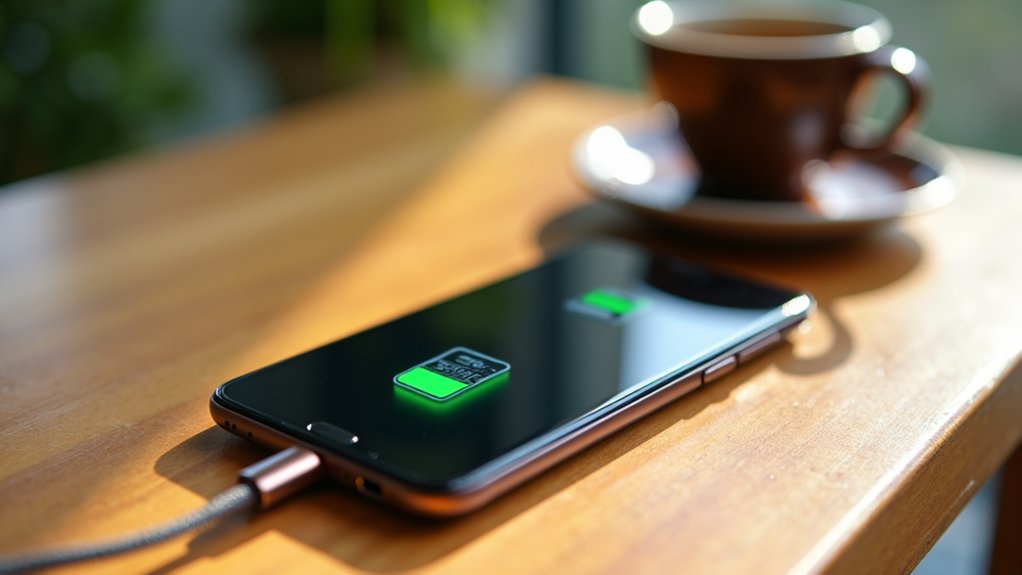
5 tips to extend smartphone battery lifespan
Optimize your smartphone's battery life with these 5 essential tips that could transform how you use your device—let's dive into the details!
Charging your Android battery the right way is essential for maintaining its health and extending its life. You may think that simply plugging in your Android device whenever the battery is low is enough, but there’s more to it. Keeping your Android battery charge between 20% and 80% can make a significant difference in its performance and longevity.

In this guide, we’ll dive into the best practices for charging your Android device, including the optimal times to charge and the importance of using the right charger. Let’s uncover the secrets that can enhance your Android battery’s performance.
Modern smartphones, such as Androids, commonly use lithium-ion batteries due to their high energy density and long lifespan.
These batteries operate through chemical reactions involving lithium ions and electrodes. During charging, these lithium ions travel from the cathode to the anode, storing energy. When you use your device, they flow back, releasing energy to power your smartphone.
It’s important to note that excessive heat can damage battery life. Therefore, avoid leaving your Android device in hot environments while charging.
To further extend the lifespan of your battery, try to keep your device’s charge between 20% and 80%. By understanding these basics of battery chemistry, you can optimize your charging habits, ensuring that your Android device performs at its best.
With these tips, you’ll be well-equipped to keep your smartphone running efficiently.
Understanding battery chemistry can empower you to make smart choices about when to charge your Android device. For optimal battery health, aim to charge your smartphone when it’s between 20% and 80%. Charging within this range minimizes stress on the battery, thereby extending its lifespan.
It’s important to avoid letting your battery drop below 20% as deep discharges can be detrimental to your device. Moreover, unplugging your smartphone once it hits around 80% is a savvy move to prevent overcharging.
If possible, try to charge your phone at night when you’re less likely to need it. This routine will keep your smartphone’s battery healthy and ready for action. Remember, consistency is crucial; sticking to a regular charging schedule can optimize your battery’s performance and longevity.
Choosing the right charger for your Android device is crucial to keep your smartphone’s battery healthy and efficient.
Always select a charger that aligns with your phone’s specifications to ensure optimal performance. Pay attention to the voltage and amperage ratings on the charger, as they should match what your phone requires.
Using an Android charger with a higher output can harm your battery over time, while a lower output might cause it to charge slowly.
Whenever possible, stick with the original charger that came with your device, as it’s specifically crafted for your phone. If you need a new one, opt for an Android charger from a reputable brand.
Steer clear of cheap, generic chargers, as they often fail to deliver a consistent power supply, potentially leading to battery problems in the future.
Overcharging your Android device can lead to battery wear and significantly reduce its lifespan. To prevent overcharging, always unplug your charger once your Android device reaches 100%. This simple habit can greatly extend your battery’s life.
If you’re unable to keep an eye on your charging habits, consider investing in a smart charger. These smart chargers automatically stop charging when your Android device’s battery is full, ensuring optimal battery health.
Moreover, it’s wise to avoid leaving your phone plugged in overnight. Overnight charging can contribute to overcharging, which can harm your Android device over time.
If you often use your device while it’s charging, be mindful of how long it’s connected. Regularly charging your phone in short bursts rather than lengthy sessions can help maintain your battery’s health.
To keep your Android phone cool during charging, it’s crucial to pay attention to its environment. Charging your phone on soft surfaces like beds or couches can trap heat, so it’s best to place it on a hard, flat surface that promotes air circulation. This simple step can help keep your Android phone cool.
If your phone has a case, removing it while charging can further dissipate heat and ensure your phone remains cool. Direct sunlight can also increase your phone’s temperature, so avoid placing it near windows or bright light to keep your phone cool.
High temperatures can harm your battery, so regularly monitor its temperature while charging. If your Android phone feels too hot, unplug it for a while to give it a break.
Keeping your phone cool not only ensures efficient charging but also extends its battery life, making it an essential practice for every smartphone user.
Keeping your Android phone updated with the latest software is crucial for maintaining optimal battery performance. Regular software updates often include enhancements that improve power management and efficiency, helping your battery last longer.
By staying updated, you also gain from bug fixes and security patches that prevent issues which might drain your battery faster.
Furthermore, manufacturers frequently optimize their software to work better with new apps and features, ensuring you don’t miss out on advancements designed to enhance your device’s performance.
To ensure you’re always running the best version, enable automatic updates or check for them manually. Staying updated with regular software updates means you’re not only protecting your phone but also maximizing its battery life efficiently.
Keeping your Android software updated is crucial for boosting performance and effectively monitoring battery health.
Regularly checking your battery’s status by navigating to Settings and then Battery will provide you with essential details about usage, charge cycles, and health indicators.
Many Android devices come equipped with built-in tools that show how different apps affect battery life. If you notice your battery drains quickly or doesn’t hold a charge, it might be time to consider a replacement.
Additionally, third-party apps can offer more in-depth analysis and historical data on battery health.
By regularly monitoring these aspects, you can maintain optimal battery performance, ensuring your Android device lasts longer and runs smoothly.
Stay proactive in monitoring battery health, and your Android will thank you for it!
Are you looking to extend your Android battery’s lifespan? Follow these simple tips to keep your smartphone powered up for longer! First, maintain your charge between 20% and 80%. This simple practice can significantly improve your Android battery’s health. Using the right charger is crucial—generic chargers might be tempting, but they can harm your device. Avoid overcharging by unplugging your phone once it’s fully charged. Timing is everything, so charge your phone at optimal times when you can keep an eye on it.
Keep your device cool, as excessive heat is a major enemy of battery life. Regular software updates and monitoring your battery health are also essential to ensure your Android battery remains in top condition. With a little attention and care, your smartphone will stay powered up, offering you a better overall experience. Remember, taking care of your Android battery not only extends its lifespan but also enhances your smartphone usage.